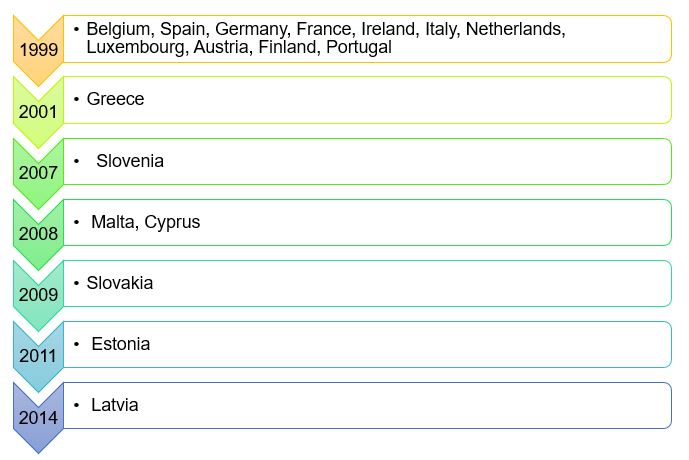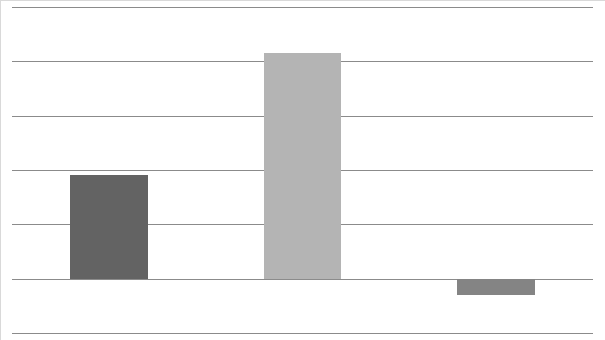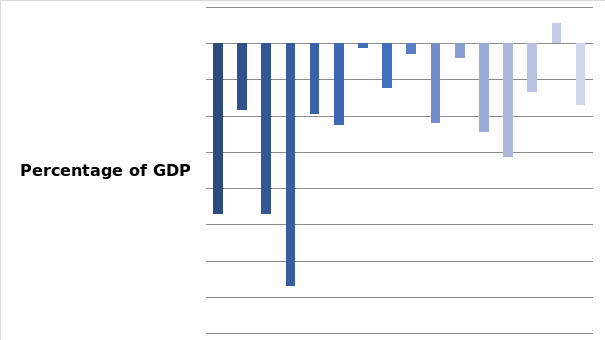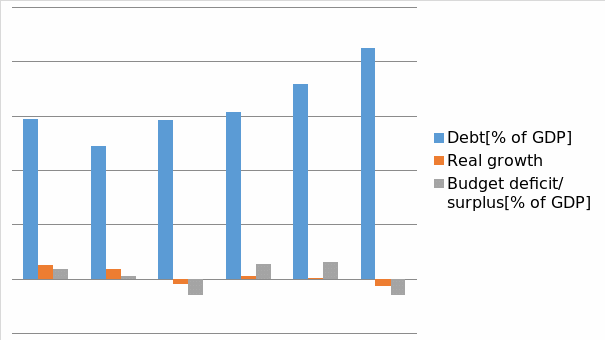Introduction
History of the European Union
The European Union (EU) was established in 1950 after World War II. Its establishment was occasioned by the need to solidify peace within the European region by bringing together rival countries under a universal institutional structure. The idea to establish the EU was borne by Robert Schuman, the then French Foreign Minister, who perceived the need to consolidate German and French steel and coal production processes. This move led to the establishment of the ECSC [European Coal and Steel Community] in 1951 with the objective of fostering strong political and economic relationship amongst France, the Netherlands, West Germany, Belgium, Luxembourg, and Italy (Global Edge 2014). Mongelli (2008, p. 101) notes that the ‘six countries established a common market with the objective of facilitating movement of goods and services together with financial and human capital’. The countries further established the European Economic Community [EEC] in 1957 by liberalising trade amongst the countries. These countries further established the European Atomic Energy Community [EURATOM]. The economic groups were collectively referred to as the European Communities (Global Edge 2014).
Mongelli (2008, p. 106) adds that the European region ‘underwent a remarkable economic growth during the 1960s, which led to the expansion of the European integration by adding other countries such as Denmark, Ireland, and the United Kingdom’. However, Mongelli (2008, p. 111) posits that remarkable ‘structural changes were made to the European Community between 1965 and 1987 and the various leadership positions in the three economic groups were merged in 1965 to establish the Council of Ministers’. The objective of the European Council was transformed to focus on long-term political and economic goals (Global Edge 2014). Economic changes such as global economic recessions and financial crises pressurised member states to improve their economic integration efforts. This move led to the establishment of the Single European Act [SEA] in 1985 and the Single Market Project in 1992. Through the SEA, the Union expanded coordination on various foreign policy issues together with social and economic programs. On the other hand, the Single Market Project led to the abolishment of all trade barriers, thus promoting intra-community trade (European Commission 2014a).
Members of the Euro zone
The Euro zone is comprised of countries within the EU that have agreed to use the euro as their common currency. Currently, the Euro zone has a membership of 18 countries and a total population of 330 million citizens. The membership is expected to increase in the near future due to the enlargement of the European area. More countries in the EU are likely to adopt the single currency system (European Commission 2014b).
Brief introduction of Euro Zone members
Most EU countries have adopted the euro except for a few such as the UK and Denmark. The timeline below illustrates the respective member states together with when they adopted the euro. Countries, which have adopted the euro, include Austria, Netherlands, Italy, Luxembourg, Spain, Ireland, France, Belgium, Germany, Finland, Germany, Greece, Slovenia, Malta, Cyprus, Slovakia, Estonia, and Latvia (Jones 2013).

The idea to develop a single European currency was first conceived in 1930 after the occurrence of the Deep Depression. The crisis had adverse effects on the economic performance of many countries in the European region, which arose from high rate of unemployment and business closures. Most countries responded to the crisis by adopting the ‘beggar-thy-neighbour’ policy, which entailed implementing deflationary measures. However, these policies made the situation worse. Countries experienced low rate of growth in international trade, high rates of unemployment, declining demand, and high rates of inflation (Lynn 2010). The EU members decided to renegotiate the ‘Maastricht Treaty’. The objective of the renegotiation was to increase the degree of collaboration amongst member states with regard to security, economic liberalisation, defence, and domestic affairs. Therefore, the Maastricht Treaty set the foundation for the establishment of the euro as the single currency. The single currency was successfully launched on 1st January 1999 (Lorca-Susino 2012).
Criteria for introduction of the euro
The adoption of the common currency is dependent on the effectiveness with which the member states meet the conditions stipulated by the ‘Maastricht Criteria’ or the ‘Convergence Criteria’, which outlines the commitment of the member states to join the Euro zone. The criterion is comprised of a number of economic requirements that prospective members must meet in order to be admitted in the Euro zone as outlined below.
- Price stability – a member state must ensure that its inflation rate does not exceed that of the three best performing member states by 1.5 points.
- Exchange rate – prospective countries must desist from devaluating their currency. Additionally, the applicant must have adopted the European Monetary System for a period not less than 2 years without severe tension before it can be examined for inclusion into the zone.
- Government finance – the applicant country’s budget deficit must not be more than 3% of the Gross Domestic Product. Secondly, the government debt must not be above 60% of the GDP.
- Long-term interest rates – The country must ensure that its long-term interest rates do not exceed 2% of the three best performing member states with regard to price stability.
The above criterion is used in assessing the degree of economic convergence amongst member states. The convergence of the respective countries is analysed by the European Central Bank and the EU. Countries intending to join the Euro zone must comply with the criteria in order to participate in the Economic and Monetary Union [EMU], and eventually adopt the Euro (Polasek & Amplatz 2003).
Optimal currency area
This term refers to a region whereby the establishment of a monetary union would lead to high benefits compared to costs. An optimal currency area is characterised by high capital and labour mobility, wage and price flexibility, and the ability of the respective governments to adjust their level of taxation (Priewe 2007). The core objective optimal currency area is to assist the respective states to cope with asymmetric change arising from its exchange rate regime. The success of optimal currency area is dependent on a number of factors such as the extent of political integration. Priewe (2007) asserts that political integration is one of the most important factors in the success of OCA. A high level of political integration amongst member states promotes compliance with the requirements and fosters collaboration amongst the various established institutions. Furthermore, OCA is also influenced by the extent of fiscal integration and a high degree of economic openness.
The Economic and Monetary Union (EMU) of the EU
The EMU represents one of the main steps in the EU’s effort to attain economic integration. The EU established three main stages in the establishment of the EMU. They include
- Stage1 – Abolition of internal barriers amongst the member states to facilitate free movement of labour, capital, goods, and services.
- Stage2- Establishment of the European Monetary Institute
- Stage 3- introduction of the euro as the single currency within the Euro zone and the enforcement of fiscal discipline amongst the member states.
Criticism of the EMU
Critics argue that the EMU is too big and it has not fulfilled the criteria for being considered as an optimal currency area (Paraschiv 2009). Furthermore, its membership is likely to be affected by the occurrence of financial crises. Despite this aspect, member states will not be in a position to devalue their currency due to the Maastricht Treaty, hence worsening their economic performance. The success of EMU will also be affected by the existence of differing economic cycles amongst the member states. Furthermore, the member states will lose their sovereignty.
The European Monetary Policy is characterised by a high rate of inflexibility. Subsequently, the member states may not respond to macroeconomic changes such as global financial crises by devaluating their currency. Mishkin (2008) argues that monetary policy flexibility is critical in improving the effectiveness with which a country responds to economic changes during periods of financial disruptions.
The Euro crisis
Despite the commitment of the Euro zone members to establish a single currency, various challenges have been experienced over the recent past. The occurrence of financial crises is one of the major challenges faced in the Euro zone due to the substantial economic differences amongst member states (Debardeleben & Viju 2012). The European Exchange-rate Mechanism [ERM] crisis, which occurred from 1992 to 1993, is a classic example of the Euro crisis. The 1992 crisis was due to policy mix and significant political and macroeconomic asymmetries amongst most European countries. The member states did not have similar economic strengths. These differences led to the generation of tensions with regard to the European Monetary System (EMS). Debardeleben and Viju (2012, p. 2) assert that the ‘crisis was arguably the case of the turmoil of the exchange rate mechanism of the Exchange Rate Mechanism of the European Monetary System’. Some member states such as Spain, Portugal, and Italy did not attain full convergence with regard to inflation rates. Subsequently, the countries were forced to adjust their currencies in order to be competitive. Such unsynchronised adjustments led to the 1992-1993 financial crises.
The Euro zone experienced another crisis in 2009. The crisis culminated after a number of European banks sought bailout due to the 2008 global crisis, hence making it difficult for the Euro zone countries to refinance their debts. The crisis was characterised by high public debt and collapse of financial institutions. Debardeleben and Viju (2012, p. 6) argue that sovereign debt ‘is a major problem for only a few Euro zone member states [Italy, Greece, Spain, Portugal, and Ireland]’. Debardeleben and Viju (2012) further opine that the current sovereign debt crisis in the Euro zone represents a critical test to the long-term survival of the single currency.
Introduction of the Euro in 1999 and the ‘cash’ Euro in 2002
A number of EU member states adopted the euro as their currency on 1st January 1999. The introduction of the euro is a critical step in the European region’s economic integration efforts. Debardeleben and Viju (2012, p.72) assert that the ‘national currencies remained in circulation, but as sub-denominations to the euro until 1st January 2002, when they were exchanged against new euro coins and bills’.
The amount of bank notes and coins supplied varied across the member states depending on the market demand. For example, 1,100 coins and 282 million bank notes were produced in Ireland. The respective national banks were required to seek authorisation from the European Central Bank in order to issue euro bank notes. Furthermore, the respective national banks have a shared responsibility to produce the euro bank notes. Since its introduction, the member states have put intensive efforts to introduce the euro cash into their economy. However, there has been general concern amongst the member states that the introduction of the euro cash would increase the rate of inflation amongst the member states (Stastna 2011).
Financial crisis 2008-2009 and the euro crisis
The Global financial crisis
Morrow (2010) asserts that financial crises have been in existence for numerous years. However, the frequency of their occurrence has increased remarkably over the past few years. The 2007 global economic crisis was a surprise to most people across the world. The 2009 global financial crisis started in September 2008 due to failure of a number of large financial institutions in the United States. The crisis affected most countries in the world due to the contagion effect. Most European banks were affected because of their association with the US banks.
Forces behind the crisis
A number of factors can explain the 2009 global financial crisis. One of the main factors relates to lack of effective administration in the US mortgage industry. Most banks in the US issued loans to customers in an effort to maximise their profitability without ascertaining the borrowers’ creditworthiness. The banks adopted the ‘originate and distribute model’ by contracting brokers to sell mortgages to customers. The brokers were compensated based on mortgages sold (Morris 2009). Subsequently, they were not effective in examining the customers’ credit rating, which increased the rated of default on loan issued (Morrow 2010). The high rate of loan defaults forced banks to repossess homes, which were used as security by borrowers. However, the homes had less value that it was initially predetermined. Subsequently, banks experienced a credit crunch. Morrow (2010) asserts that banks did not have adequate liquidity capacity to enable them deal with the financial needs. Other countries were affected by the financial crisis in the US due to the existence of collaboration between the two countries’ financial systems.
Poor credit rating and securitisation was also a major factor that led to the crisis. Morrow (2010, p.2) asserts that most ‘credit rating agencies erroneously rated mortgaged-based securities and their derivatives as safe investments’. Subsequently, banks relied on substandard information in making their decision to use mortgages as securities. The global crisis, which originated in the US, hit the affected the European Union due to the link between financial institutions in the US and the European Union through securitisation. The occurrence of the crisis has tested the future of the EU’s economic and monetary union and the stability of the euro. The crisis has confirmed the view that the EU is no longer a political integration, but a fully-fledged economic entity. In order to survive in the future, it is imperative for the Euro zone to consider undertaking comprehensive monetary, political, and fiscal union. This move will aid in integrating the most effective macroeconomic formula to enhance economic integration.
Effect of the financial crisis on Germany and France
Most countries in the EU were affected by the 2009 global financial crisis and the euro crisis. Germany is one of the countries, which were adversely affected by the crisis. The country’s real growth with regard to GDP declined significantly, which was occasioned by a number of factors such as decline in the volume of exports (Mongelli 2008). The euro zone crisis forced most member states to reduce their volume of exports significantly. The table below illustrates the percentage change in German’s nominal exports over the past decade (Das 2014).

The crisis also led to a significant decline in private consumption due to depreciation of the euro, low interest rates, and increase in the level of uncertainity on the region’s economic outlook (Broyer, Petersen & Schneider 2012). France is ranked as one of the most indebted economies in the world. By 2011, France had a debt amounting to 1.69 trillion euros, which is estimated to be 86 per cent of the country’s total GDP (Broyer, Petersen & Schneider 2012). The occurence of the Euro zone crisis is likely to worsen the situation. The crisis has led to 20% increase in the rate of unemployment in France.
Greece was also affected by the debt crisis. One of the major effects relates to its government debt. According to Rodgers and Burn-Murdoch (2012), Greece had the greatest gross government debt by the end of the 2nd quarter of 2012. The graph below illustrates a comparison of government debt amongst the EU Countries.

The graph above shows that Greece, Belgium, Portugal, Italy, and Spain have a high goverment debt as compared to Estonia. In addition to government’s debt, the euro crisis led to a higher increment in the size of the budget deficit in Greece as compared to other member states as illustrated by the grapah below.

Cyprus was not adversely affected by the 2009 financial crisis because its financial institutions did not integrate ‘toxic’ investment products, which were a major reason for major banks’ failures across the world. The graph below illustrates the Cyprus’ economic performance with regard to budget deficit/surplus, real growth, and government debt as a percentage of GDP from 2007 to 2012.

The Euro crisis and the further federalisation of a United Europe
The EU should proceed with its economic integration efforts despite the previous economic upheavals. In order to survive in its economic integration efforts, it is imperative for the EU to undertake further harmonisation of its budget and tax policies. Furthermore, the EU should focus on strengthening control of its financial systems by improving its governing bodies such as the European Commission. Secondly, the EU should enhance its economic integration by promoting competitiveness and growth by investing in re-industrialisation (Mongelli 2008).
The Banking Union
The EU should also create a banking union to control and monitor the operations of the various financial institutions to aid in minimising the likelihood of a financial crisis due to investing in risky financial instruments. The Banking Union should target the various Banking Associations of the member states for collaboration and integration (Pisani-Ferry, Sapir & Wolff 2012). The banking union in the EU should focus on four main principles, which include regulation, supervision, bank resolution, and deposit insurance. Banking supervision will give the respective governments an opportunity to assess the operations of banks and the types of potential risks. On the other hand, banking regulations focus on ensuring that banks can deal with externalities and shocks. Other aspects that should be considered include eliminating fraud and money laundering. The deposit insurance policy is focused at ensuring that the banks counter the threat of loss of value arising from the occurrence of a crisis while the banks’ resolution authority entails providing banks with sufficient capacity to make their own resolutions without major disruptions (Pisani-Ferry, Sapir & Wolff 2012).
Conclusion and recommendations
This study shows that there is a high probability of the EU undergoing a significant growth by investing in economic integration amongst the member states. However, the region has experienced major challenges arising from the occurrence of a financial and debt crisis. Lack of effective monetary, fiscal, and political policies is one of the factors that have made the EU prone to financial and debt crises. Subsequently, the economic stability of the member states has been adversely affected. In order to improve the likelihood of survival, the EU should improve its fiscal, monetary, and political policies. This move will enhance the effectiveness with which the countries respond to economic upheavals without being constrained by such policies.
Limitations
This study mainly focused on the Euro area member states. Subsequently, the study evaluated only 18 countries, which have adopted the single currency system by integrating the euro as their currency.
Future research
It is imperative for the relevant stakeholders to evaluate how they can improve the resilience of the Euro zone to global economic changes. One of the aspects that the stakeholders should consider entails instituting strong and effective institutions to control the operations of the Euro zone member states.
References
Broyer, C, Petersen, A & Schneider, R 2012, ‘Impact of the euro crisis on the German economy’, Economic Research and Corporate Development, vol. 2 no. 154, pp. 1-11.
Cyprus International Institute of Management: Cypriot financial crisis; its causes and impacts on financial markets 2013.
Das, S 2014, Debt crisis has left Germany vulnerable. Web.
Debardeleben, J & Viju, C 2012, Economic crisis in Europe; what it means for the EU and Russia, Palgrave Macmillan, New York.
European Commission: The road to EMU 2014a. Web.
European Commission: Who can join and when 2014b. Web.
Global Edge: European Union; history 2014. Web.
Jones, D 2013, Understanding central banking; the new era of activism, M.E Sharpe, New York.
Lorca-Susino, M 2012, The Euro in the 21st century; economic crisis and financial uproar, Ashgate Publishing, New Jersey.
Lynn, M 2010, Bust, Greece, the euro, and the sovereign debt crisis, Wiley, Chichester.
Mishkin, F 2008, Monetary policy flexibility, risk management and financial disruptions. Web.
Mongelli, F 2008, European economic and monetary integration and the optimum currency area theory, European Commission, Brussels.
Morrow, R 2010, ‘A critical analysis of the US causes of the global financial crisis of 2007-2008’, Australian Marxist Review, vol. 2 no. 53, pp. 81-112.
Morris, C 2009, The two trillion dollar meltdown, Black Inc., Melbourne.
Paraschiv, R 2009, Euro under cross fire; will the European Monetary Union survive, University of Iasi, Sydney.
Pisani-Ferry, J, Sapir, A & Wolff, G 2012, ‘What kind of European Banking Union’, Bruegel Policy Contribution, vol. 1 no. 12, pp. 1-20.
Polasek, W & Amplatz, C 2003, ‘The Maastricht criteria and the euro; has the convergence continued’, Journal of Economic Integration, vol. 18 no. 4, pp. 661-688.
Priewe, J 2007, ‘Reconsidering the theories of optimum currency area – a critique’, European Integration in Crisis, vol. 3 no. 5, pp. 27-52.
Rodgers, S & Burn-Murdoch, J 2012, Euro zone debt crisis; the key charts that you need to understand. Web.
Stastna, K 2011, Euro; the common currency explained. Web.